How Fayetteville's earliest restaurants built the city's food culture
Halfway between the Eastern barbecue landmarks of Greenville and Goldsboro and the Western-style mecca of Lexington sits Fayetteville, a city of more than 200,000 people that has seemingly struggled to build its own culinary identity.
Fueled by a veritable pedigree chart of cooks who learned the craft under the tutelage of another pitmaster, the newly minted barbecuers went off to open their own restaurants, building those communities to the east and west, all smaller than Fayetteville, into culinary destinations heralded across the Southeast.
Wilmington, population 123,000, and Asheville, population 93,000, each have developed restaurant scenes headlined by James Beard Award finalist chefs whose names are widely recognizable and whose restaurants garner national attention. The same cannot be said for Fayetteville.
Maybe it's the largely transient military population and the growth of corporate chain restaurants that pounced on the opportunity when Fayetteville and Fort Bragg were ready to grow. Maybe it's the decimation of downtown from the cultural center of the city full of restaurants and department stores to a forgotten place left behind when the city moved west. Downtown became a haven of drugs and crime, giving birth to the city's unfortunate "Fayettenam" nickname, an image problem it's taken the city decades to shake.
Growth of the city's culinary identity was stunted for decades, but as downtown begins to return to its pre-Vietnam War vibrancy and restaurants cooking cuisines from across the globe continue to open across the city, there's optimism for Fayetteville's future.
To understand how we got here, let's start from the beginning.
Before the westward sprawl that would fundamentally change Fayetteville, the heart of the city was downtown.
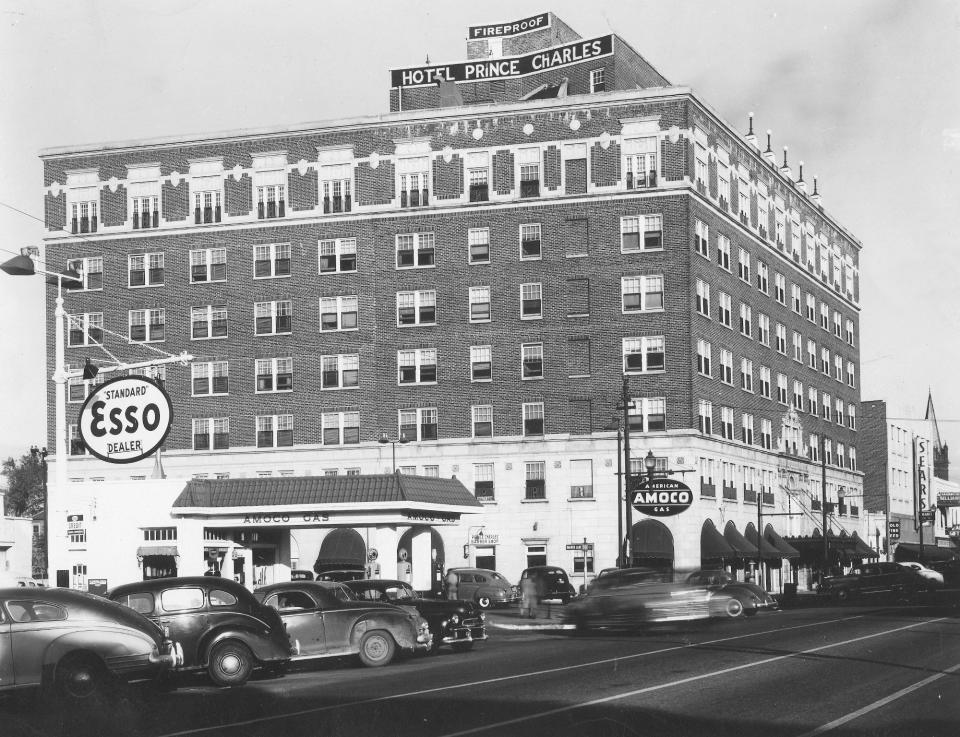
Places like Steve's Cafe, New York Café, Silver Moon Café, the Rainbow Restaurant and the Central Café called Hay Street home. The Prince Charles Hotel opened in 1925 with a gala described in a Fayetteville Observer report as "one of the most brilliant social affairs of the season surpassing anything that has ever been staged in the city."
Fayetteville, about halfway between New York and Florida, was a popular overnight stop for travelers heading north or south. Hotels like the Prince Charles and the Lafayette Hotel, which opened in 1825 and counted Franklin D. Roosevelt and Babe Ruth among its distinguished guests, were fashionable places to stay and eat.
Old homes from Person Street to the city's Haymount neighborhood served as bed and breakfasts for travelers. The Colonial Inn, located on what's now known as Heritage Square on Dick Street, became perhaps the most prominent of these guest houses in the 1930s, thanks to proprietor Fanny Williams and cook Mary Sanders' Southern cooking.
Dining options being largely limited to hotels and guest houses was the norm for the time, said city historian Bruce Daws.
But it wasn't until the turn of the century that standalone restaurants began to flourish. The growth of new restaurants, fueled largely — but not exclusively — by the influx of Greek immigrants to Fayetteville, ramped up in the early- to mid-20th century. In 1908, brothers Constantine, Arthur and Thomas Havelos opened the Busy Bee Cafe at the corner of Green and Person streets and the Central Cafe on Hay Street, believed to be the first of many Greek-owned restaurants in Fayetteville.
Nick Fasul's arrival in Fayetteville from Greece in 1918 proved to be perhaps the most pivotal moment in Fayetteville's restaurant history.
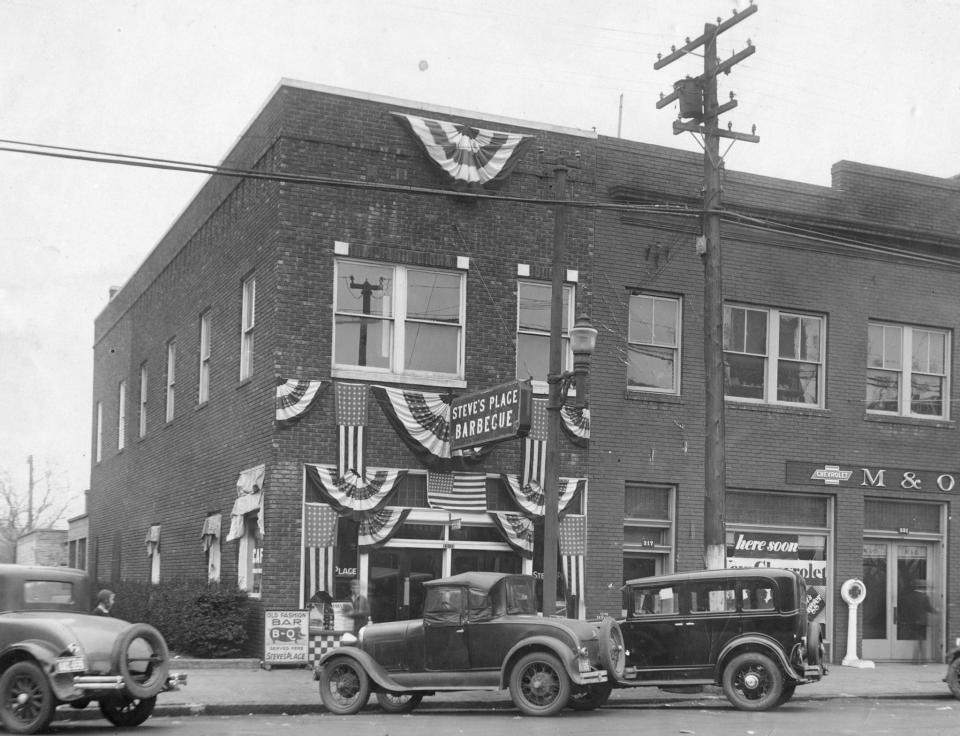
Fasul worked at the Central Cafe for around two years before he and his brother, Steve, opened Steve's Place at 315 Hay St. in 1920. Within a decade, Hay Street was lined with restaurants like the New York Cafe, New Sanitary Cafe, Royal Cafe and the Olympia Cafe, all owned by Greek families.
While the owners were often new to America, these restaurants served American fare, often open long hours for breakfast, lunch and dinner.
"They were catering to what people wanted," Daws said.
Black-owned establishments
Of course, these were not the only restaurants in Fayetteville. In 1924, 30 years before Brown v. Board of Education ruled that schools must be desegregated and nearly four decades before hundreds of Fayetteville State College demonstrators marched on Hay Street and successfully demanded integration, Fayetteville had at least eight "eating houses," the term often used to differentiate Black-owned, Black-serving eateries from the white-owned boarding houses and restaurants.
According to Observer archives, the Oyster and Eating House was operating on Person Street in 1837, making it perhaps the earliest recorded such business in Fayetteville.
Fayetteville's annual city directory, which included a full listing of restaurants, marked the restaurants open to Black residents with an asterisk or a "(c)." The city's 1946 directory showed nine such restaurants, primarily located around Person and Hillsboro streets in what were historically Black neighborhoods in Fayetteville.
Jimmy Buxton, the current president of the Fayetteville branch of the NAACP, said he remembers eating at Mabel's Restaurant, where owner Mabel Brayboy's soul food, especially her fried fish, made the restaurant one of the institutions of Hillsboro Street for decades.
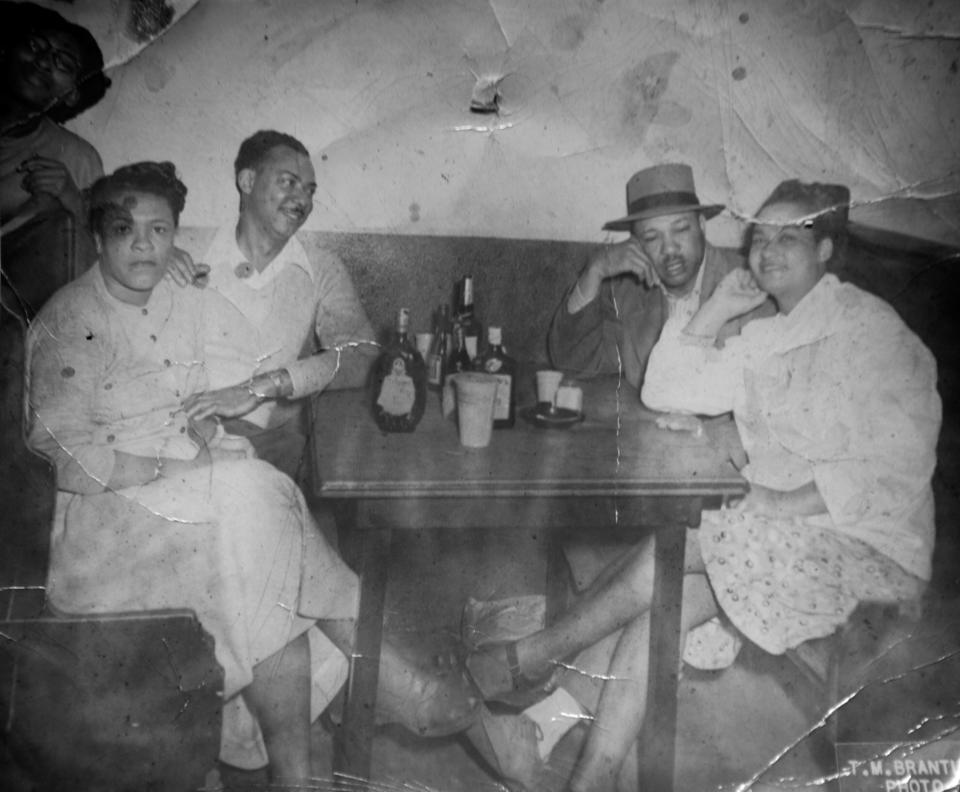
Other times he ate at Carter's Restaurant, also called Carter's Soul Food, where owner Jerelene Carter cooked barbecue ribs, meatloaf, pork chops and other Southern classics from 1971 to 1989. Before it was Carter's, the restaurant at the corner of Person Street and South Eastern Boulevard, another historically Black neighborhood, was known as Arthur's Seafood Grill and run by Carter's aunt, Lucy McClain.
Arthur's was among the 20 or so businesses in Fayetteville listed in multiple editions of the Negro Motorist Green Book throughout the 1940s and 1950s, which provided a state-by-state listing of hotels, restaurants and other businesses that would cater to Black travelers.
Other Fayetteville restaurants listed in the Green Book included the Silver Grill, then located at 115 Gillespie St., and the Mayflower Grill.
Also listed was Mack's Tavern, located on U.S Route 301 around Hope Mills near the Cumberland-Robeson County line. Bernice Douglass doesn't remember when exactly her aunt and uncle, Bertha and Ernest McMullen, opened the business that included a restaurant, grocery, gambling room, dance hall and lodging, but she was born in 1942 and knows it was open before then.
The restaurant served some Southern classics — Douglass remembers eating whole-hog pork sandwiches, a deal at only 30 cents — but Douglass said that Bertha spent time living in New York City and Italy and brought the European recipes she learned there back with her to Cumberland County.
"It was a really nice place," Douglass said.
Black doctors from across North Carolina came to Mack's to gamble, while celebrities, like boxers Joe Louis and Sugar Ray Robinson, would call ahead to reserve one of the cabins outside the main building to stay in while traveling down the coast.
Black soldiers on Fort Bragg would make the trip down, as would Fayetteville State students, but Mack's drew a crowd from all backgrounds, especially Greeks, whom Douglass said had darker complexions and would face similar discrimination by the likes of the Ku Klux Klan and other white supremacist groups.
"Everybody went to Mack’s Tavern," she said.
Buxton and Douglass said the Greek-owned restaurants tended to be welcoming to non-white customers. The best example of this was Vick's Drive-In, a Greek-owned restaurant that operated in a historically Black neighborhood for nearly 60 years that both Buxton and Douglass said they frequented.
Victor Parrous, who owned the old Baltimore Lunch on Hay Street, joined with George Skenteris, who owned the old Silver Moon Cafe on Hay Street, to open Vick's at the corner at Hillsboro and Rowan streets in 1957. The two Greek immigrants served chitlins, collard greens, pork chops and other soul food offerings to a predominantly Black clientele.
As downtown fades, Fayetteville moves west
The building that housed Mack's and all its different businesses, once located next to where the Union Oak AME Zion Church stands today, is long gone. Mack's closed in the 1960s due both to racial integration making for increased competition with similar businesses that had been off-limits for much of Mack's clientele, Douglass said, but also the construction of a new section of Interstate 95 that diverted travelers away from Fayetteville.
The highway, while making travel quicker for motorists, dealt a blow to many restaurants and hotels, particularly those along Eastern Boulevard/U.S. 301. The one-time strip of dirt road known more for bootlegging, gambling and prostitution got a facelift in the 1950s as it became a thoroughfare for travelers. During its heyday, Eastern Boulevard had "wall-to-wall restaurants and hotels," Daws said.
Gus Poulos opened the Village Diner, which later became New York Restaurant, on Eastern Boulevard in 1957. Restaurants like the Four Flames Buffet and Shamrock Restaurant opened around the same time.
But of all the restaurants in that well-traveled area just east of downtown, perhaps none were as revered as the Lobster House. It opened at 448 Person St. around 1930 as the Sea Food Grill. In 1963, Bobby Warren bought the restaurant and changed its name to Lobster House. Its steak and seafood dinners, tableside Caesar salads and flambéed desserts cemented its reputation as a fine-dining destination both for locals and travelers. Celebrities like Bob Hope and Phyllis Diller are among the stars said to have dined at Lobster House.
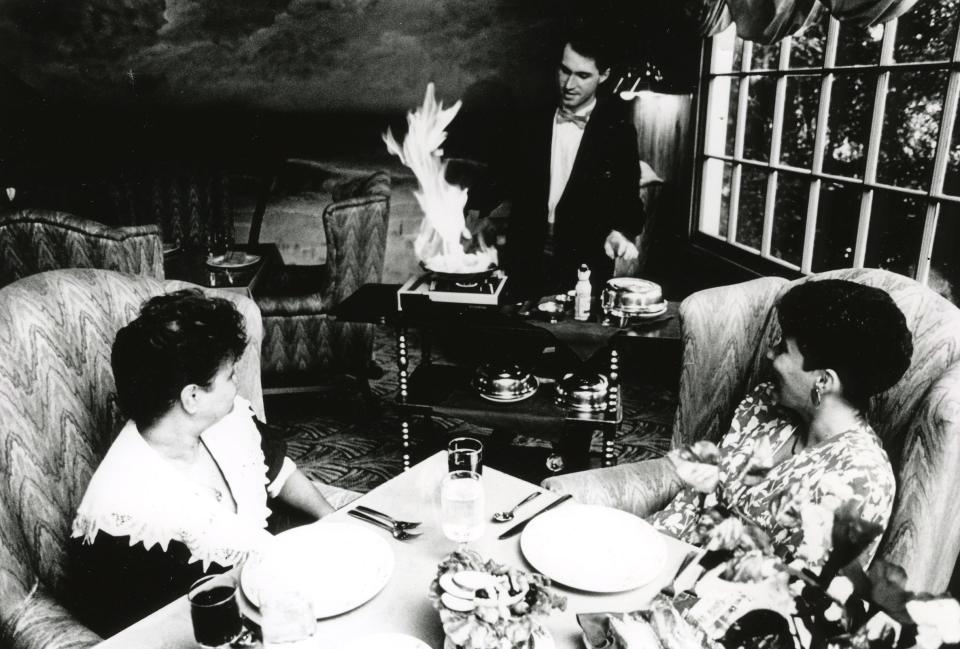
But a fire in 1973, a pair of arsons in 1974 and 1988 and frequent, tumultuous changes in ownership, including a temporary closure in 1995 after the restaurant's then-owner was sentenced to prison for his role in a multimillion-dollar drug ring, took the shine out of this once-glowing star.
In 1980, the final piece of Interstate 95 opened miles away from Fayetteville, taking with it the travelers who used to pass by the restaurants and hotels on U.S. 301.
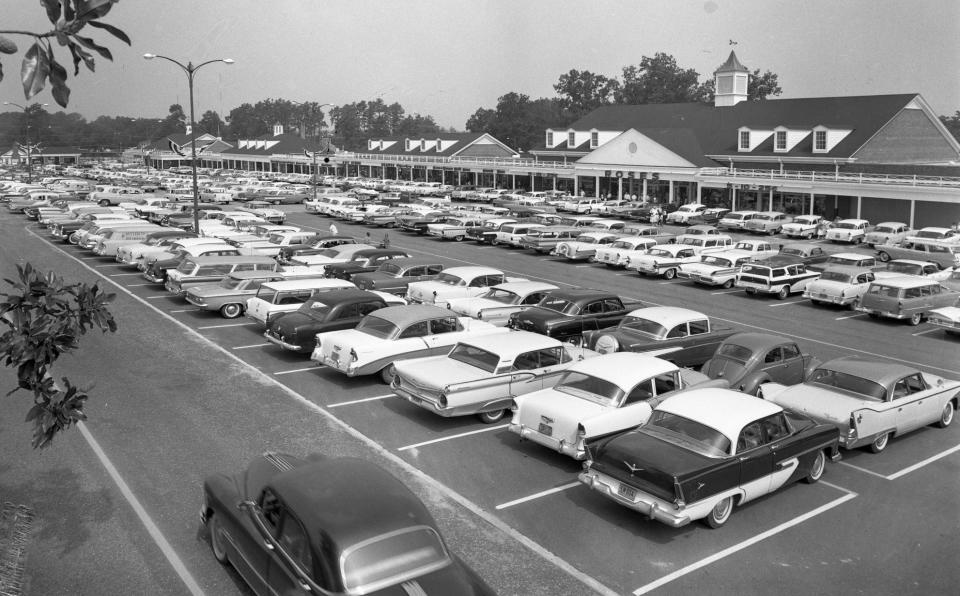
If motorists weren't willing to drive into the city to Eastern Boulevard, they were even less likely to drive even further downtown. As the motorists left, many businesses did, too. Empty storefronts increased. Crime did, too. Daws said the Eastern Boulevard corridor soon became yet another once-bustling spot in Fayetteville that had seen better days.
Elsewhere in the city, business was thriving.
In 1955, the Eutaw Village Shopping Center opened on Bragg Boulevard, the first such shopping center in Fayetteville. It wasn't huge, but it set the stage for businesses to move out of downtown, Daws said.
As the businesses opened in other parts of the city, so did the restaurants. Nick Fasul, the early restaurant pioneer, his daughter, Dena Fasul Potter, and Fasul's nephew, Steve Paris, opened the Hillcrest Drive-In on Bragg Boulevard in 1961 and became North Carolina's first restaurant to serve Kentucky Fried Chicken. Nick Fasul also owned the Milk Bar, the city's first drive-in, a short way down the boulevard from the Hillcrest.
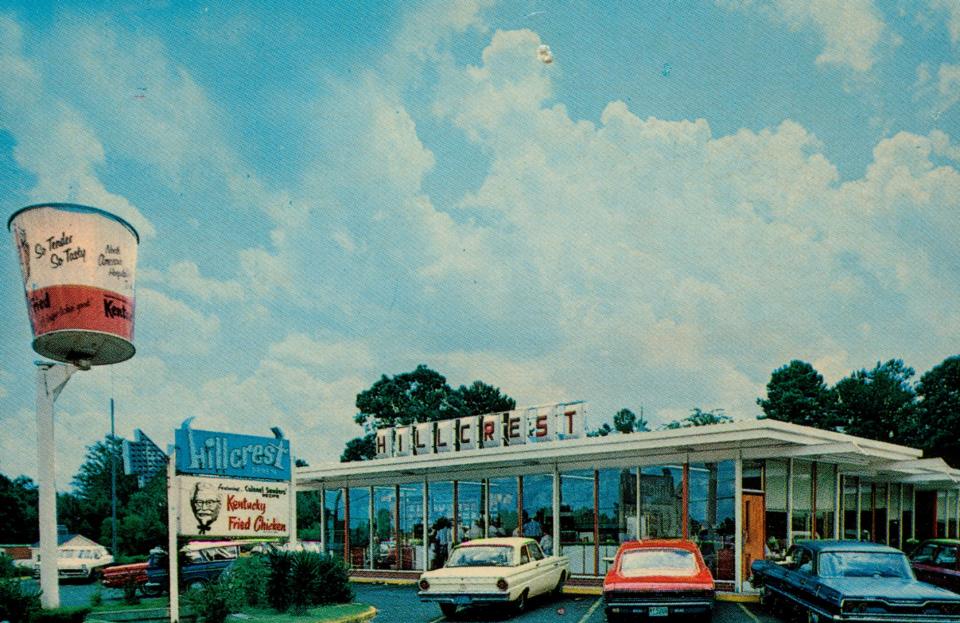
That same year, Deno and James Fasul, Steve Fasul's sons, opened the Barn, also on Bragg Boulevard. It started as a barbecue restaurant serving pork barbecue sandwiches, coleslaw and the like, but business didn't take off. At Steve Fasul's suggestion, they switched to steak and seafood and the restaurant quickly became revered for its classic white tablecloth fine dining.
Pete Parrous, like his brother Vick, followed the Greece-to-Hay Street pipeline, but soon decided to venture out away from downtown. He came to the United States in 1938, fought in World War II, and returned to Fayetteville to open Luigi's on Hay Street in the early 1950s. Perhaps sensing the impending downtown decline, he closed the original Luigi's at 475 Hay St. in the 1960s.
Fayetteville and Fort Bragg have long been tightly intertwined, so when the Gulf of Tonkin Resolution was signed in 1964, significantly ratcheting up the United States' involvement in the Vietnam War and bringing a surge of young soldiers to Fort Bragg, the impact it had on Fayetteville was tremendous.
In the '60s and '70s, the downtown restaurants and department stores largely left and in their place came bars and strip clubs. The Prince Charles hotel, once the beacon of high living in Fayetteville, became a glorified brothel. Daws called it a "blighted criminal mess."
The old Luigi's spot later became Rick's Lounge, the last and likely most infamous topless bar on Hay Street. It's a succinct summary of what downtown would become.
Before becoming a city historian, Daws worked as an undercover narcotics officer. His beat was Hay Street.
"I was there to see it die," he said.
Jacob Pucci writes on food, restaurants and business. Contact him by email at jpucci@gannett.com or follow him on Twitter at @jacobpucci or on Facebook. Like talking food? Join our Fayetteville Foodies Facebook group.
This article originally appeared on The Fayetteville Observer: NC food history: The earliest days of Fayetteville's dining scene

